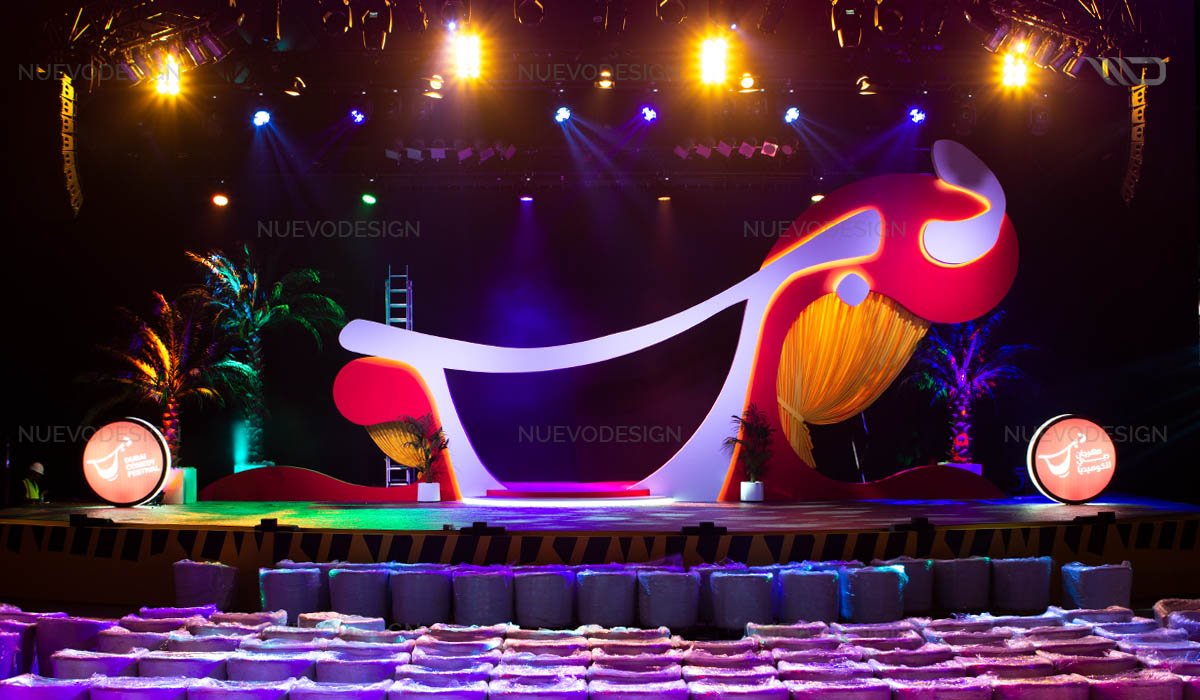Creating the right atmosphere for a comedy show is a crucial element in ensuring a successful event. It’s not just about the jokes; the environment plays a significant role in enhancing the comedic experience, making audiences feel comfortable, engaged, and ready to laugh. This atmosphere involves a combination of the venue’s physical setup, lighting, acoustics, and overall vibe.
Venue Layout: Setting the Stage for Laughter
The physical layout of a comedy venue can make or break the atmosphere. A successful comedy venue should have an intimate setup, with the audience positioned in close proximity to the stage. This creates a sense of connection between the comedian and the audience, which is crucial for delivering punchlines effectively.
Seating arrangements should be arranged to ensure that everyone has a clear view of the performer. Avoiding obstructed sightlines allows the audience to focus on the comedian’s delivery, body language, and facial expressions, all of which are integral to the performance. Seating that promotes easy interaction between the comedian and the crowd can also be vital, as comedy often thrives on engagement and quick-witted exchanges.
Lighting: Setting the Mood for Comedy
Lighting plays a pivotal role in creating the perfect atmosphere. Proper lighting can highlight the performer and set the tone for the entire show. Dim lighting, for example, creates a relaxed, intimate environment that encourages the audience to let their guard down, making them more receptive to humor. A spotlight on the comedian ensures that the performer is the focal point, while subtle background lighting prevents the room from feeling too dark or uncomfortable.
On the other hand, too much light can cause a sterile or harsh environment, which may reduce the audience’s comfort level. Adjustable lighting allows for flexibility, adjusting the ambiance as needed throughout the show to enhance timing and mood.

Acoustics: Ensuring Clear Sound
Clear sound is essential for any comedy show. A well-balanced sound system ensures that jokes are heard clearly from any seat in the venue. Poor acoustics can lead to muffled words or distorted sound, making it difficult for the audience to understand the comedian, thus ruining the timing and impact of the performance.
Comedy venues must also take into account the acoustics of the room, from how the sound bounces off walls to the material the floor and ceiling are made of. Venues with excessive echo or reverberation can cause distortion, making it harder for audiences to catch every punchline. Testing the sound system before the show and adjusting it for optimal clarity can help avoid these issues.
Crowd Comfort and Engagement
Creating a comfortable environment goes beyond just the physical space. The temperature, seating comfort, and even the type of drinks available play a role in creating an enjoyable experience. If the room is too hot or cold, or if seats are uncomfortable, it can detract from the enjoyment of the show.
Comedy is a shared experience, and ensuring that the crowd feels at ease and comfortable encourages laughter and social interaction. Venues can provide additional touches, such as table service for food and drinks or accessible restrooms, to enhance the overall experience.
Moreover, the overall vibe of the venue is just as important. The walls can be adorned with comedic posters, lighting can shift from warm tones to cool colors depending on the show’s mood, and the staff should be friendly and welcoming, fostering a relaxed atmosphere that encourages laughter.
Creating an Immersive Experience
The atmosphere of the comedy venue should reflect the tone and brand of the venue. Some venues embrace a more traditional, classic comedy club feel, with retro designs, dark wood accents, and vintage lighting. Others may aim for a modern, sleek, and minimalistic design, with cutting-edge technology and contemporary furnishings.
This atmosphere should match the type of comedians the venue hosts. A hip, trendy venue may attract younger, edgier comedians and a crowd interested in experimental or alternative comedy, while a more classic venue may cater to traditional stand-up and family-friendly humor. The venue’s identity should help guide the audience’s expectations from the moment they enter the door.
Conclusion
Creating the perfect atmosphere for a comedy show involves a delicate balance of physical design, lighting, sound, and comfort. It’s about curating an environment where audiences can relax, engage, and immerse themselves in the experience. By paying attention to these details, comedy venues can foster an environment that amplifies the humor, enhancing the enjoyment for both the comedian and the audience. When all elements come together, the atmosphere of a comedy show can turn an ordinary event into a night of unforgettable laughter.




